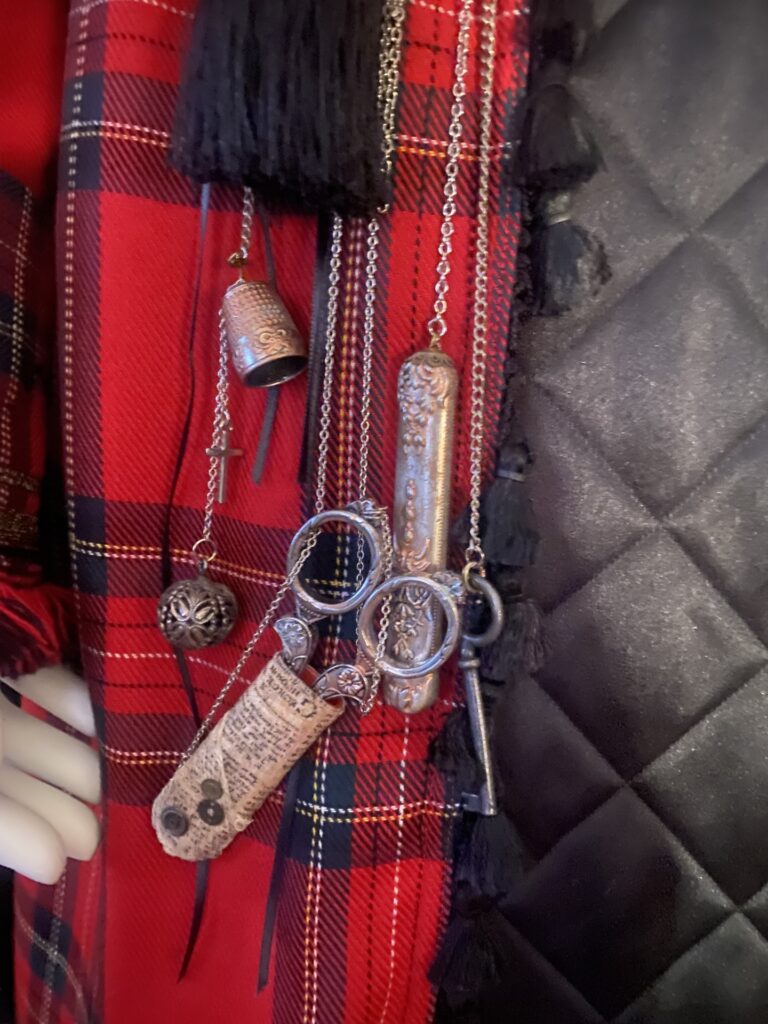Victorian Life
What Would You Carry?
Most ladies would not think of leaving the house without a purse, a tote or, at least, a fanny pack. We know Victorian ladies carried reticules, but they hardly accommodated more than a hankie and a house key – hardly all their “necessities.” How did they manage? They used a clever little accessory called a chatelaine!
As far back as ancient Rome, people wore useful items on a belt around their waists, and in Medieval times men wore pockets on the outside of their clothing. By 1828, ladies of high standing at the time carried the keys to the “castle” attached to their waists. Such a person was known as the “Lady Chatelaine.” This accessory soon caught on as mass-produced versions became available.
There were two ways of wearing the chatelaine. Items could be attached to a belt by a clip or attached to clothing by a pin like a brooch. The items attached depended on one’s lifestyle, station, or hobbies. They were designed to be practical and utilitarian. Additionally, they were deemed to represent what a woman thought was important to have handy and were used by all classes of society. Society ladies, however, did not wear them in public.
There were several types of chatelaines with the high society variety being the most preserved to this day. These chatelaines were often made by jewelers of fine quality materials and passed down through the family. They were designed for women to wear while spending time at home, perhaps engaged in such activities as embroidery or reading. Items might include a pair of spectacles, a hankie, a tiny pouch for a perfume bottle or smelling salts and a tiny notebook.
Another popular chatelaine was the hobby or niche chatelaine. They were worn to facilitate personal pursuits, and included items helpful for painting, sewing, dog breeding and even mild sports.
If a family had a household staff, the senior housekeeper would wear a heavy chatelaine out of necessity, and as a status symbol. Items included would be many, many keys, sewing accessories and other small household tools deemed necessary for household tasks.
As women began to enter the workplace, nursing became a prominent occupation in the late 19th century. Since nurses were always rushing from room to room, items such as a thermometer, scissors, a tongue depressor and, of course, keys needed to be always at hand. There are many museum quality photos of Victorian nurses wearing their chatelaines with pride in antique shops.
One of the mannikins in the new exhibit at the Davis-Horton House is wearing a chatelaine. Can you spot it? And – what would you carry? A credit card? A lipstick? A house key? Definitely a cell phone!

